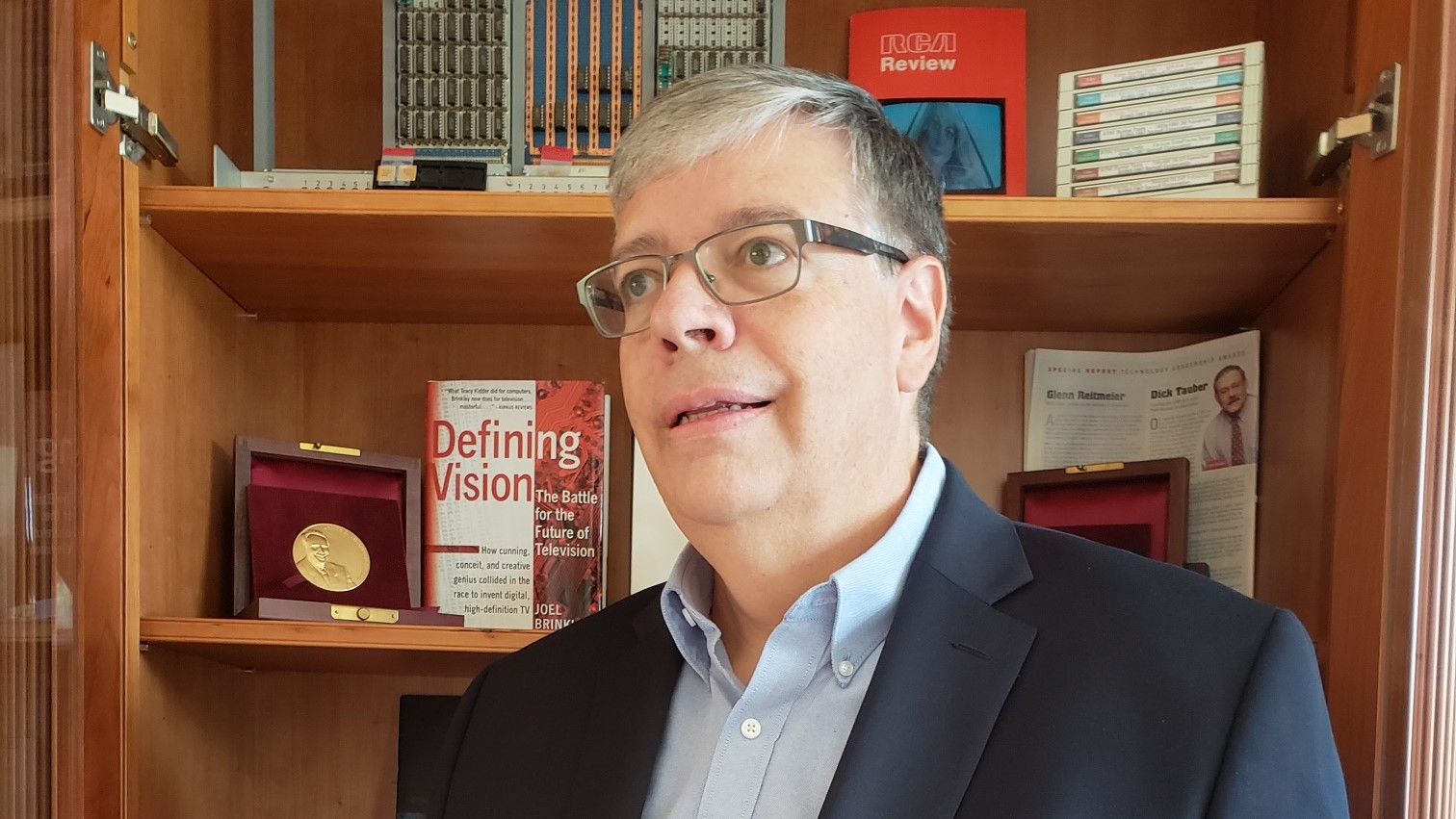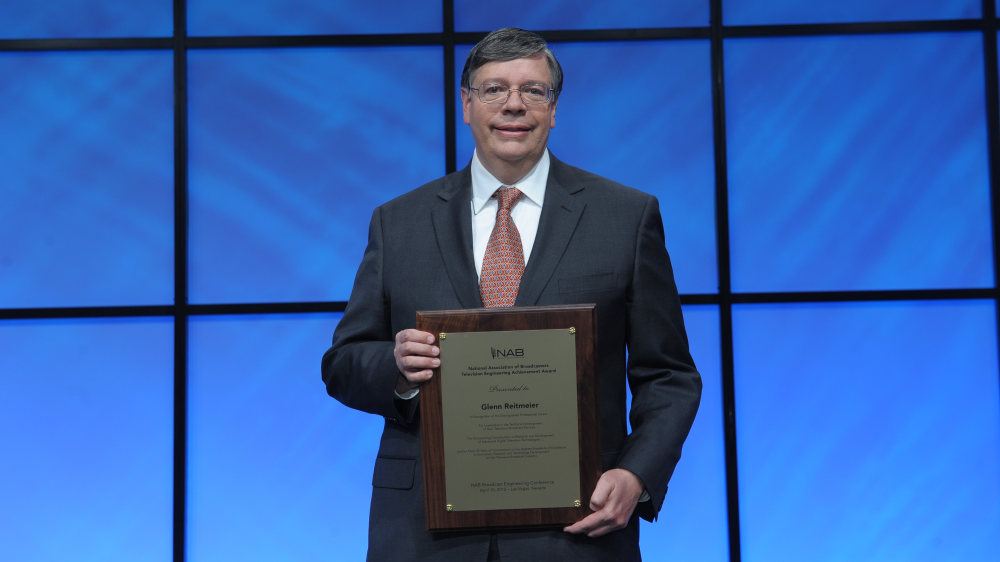Glenn Reitmeier, former senior vice president, Technology Standards and Policy, at NBCU, sees his long career in R&D with Sarnoff Labs and senior technology positions at NBC Universal as a prelude to the next phase of his professional life.

Taking the technology, business—and even legal, in the sense of working closely with lawyers—experience he has amassed over his more than 40-year career, Reitmeier has formed GlennReitmeierTV, a consultancy devoted to helping those who call the shots in the industry navigate their way to success.
In this, the second of TVTechnology’s two-part interview with Reitmeier, the tech visionary talks about the highlights of his time in R&D at Sarnoff and at NBCU, lessons he learned along the way, the future prospects for television and how the tension between traditional broadcast engineering and the onslaught of IT tech and specialists will likely play out and a future in which transition is the order of the day.
(An edited transcript.)
TVTechnology:When you look back at your career it seems like, generally speaking, the first half was devoted to R&D and the second half was spent as a broadcaster. How would you compare the two? And did you ever find yourself at NBCU thinking, “I wish I would have had this or that insight when I was involved in this or that R&D project?” If so, can you give me an example?
Glenn Reitmeier: It might seem like I had two very different careers, but they were more similar than you might expect. If you think about a “technology maturity spectrum” as a left-to-right progression of R&D, advanced development, product design, product manufacturing and user application of products, my Sarnoff and NBCU roles would appear to be as far apart as you can get. But if you take that straight line and wrap it around in a circle, then R&D and user applications become adjacent, and it’s a small step between the two.
How can that make any sense? Well, at Sarnoff we started with technology experts from many different disciplines, and we attempted to come up with R&D projects that would create commercial value—think of that as a “technology push.”
The professional video industry's #1 source for news, trends and product and tech information. Sign up below.
In my role as a technology leader at NBCU, I was able to start with an understanding of our business challenges and attempted to identify technologies and drive the creation of standards that would provide solutions. Think of that as a “technology pull.” So, in both roles I was always trying to “connect the dots” between business needs and technology solutions.
In our Sarnoff R&D efforts, we had to rely on our project sponsors and partners to help provide the deep business insights and context that we lacked. For example, in the Advanced Digital HDTV effort, having NBC’s insights as a broadcaster combined with Thomson and Philips insights as TV manufacturers was extremely powerful. But I have learned that it’s extremely difficult to get business leaders and technologists to collaborate productively. They often have very different perspectives and “speak different languages” that need a translator. Now add lawyers to the mix and there is another whole set of perspectives and vocabulary. The ability to be conversant in the business, legal and technology domains and to “connect the dots” among them is where I hope to create value in my consultancy.
An example of an insight that I wish I had during the Grand Alliance effort is the importance of audience measurement. It was assumed that however audience measurement worked in analog, it would work in digital. In retrospect, maybe we could have done some things that would have advanced the art of audience measurement and commercial relevance in ATSC 1.
TVT:How long will broadcast TV remain viable?
GR: The answer is it’s all up to the broadcasters and the business leaders. If the broadcasters have the commitment to be technology leaders and they continue to innovate and provide valuable services, the services may change and morph, but broadcasting TV as an industry has the opportunity to survive and prosper. If you find yourself painted in a technological corner, if you are at a dead end, or you fail to innovate, then you are in big trouble. I think it is all about vision and leadership.
TVT:How do you see the back-and-forth between broadcast engineers and IT specialists ultimately playing out at stations, groups and networks?
GR: I think in the short-term, it will take a lot of dedicated teamwork. I don’t think we can, nor would we, escape the IT transformation and IP infrastructure changes that are coming over the industry. Short and medium term, teamwork, collaboration and bringing multiple skills to bear will be a necessity.
I think over the long-term, how we think about a broadcast engineer is going to change, and I think there is going to be a little bit of a subset of the IT world that has to deal with real-time signals and real-time computational performance. I think, not just for broadcasting, but for other applications of video, audio and media or lots of things, I think the IT world will become more real-time sensitive.
TVT:What do you see as your top technical contributions during your 25 years at Sarnoff, rising from an entry-level research associate to VP, HDTV and Multimedia Systems?

GR: Early in my career, I was fortunate to play an important role in establishing the ITU-R BT.601 Component Digital Video standard, which was the basis for the SMPTE 259 Serial Digital Interface standard that became ubiquitous and made digital production and broadcast facilities a practical reality. For broadcast equipment, I worked on TV special effects algorithms, the D1 and D5 VTR tape formats and associated error correction and concealment. I worked on digital ICs that miniaturized camera timing and signal generation. For consumer electronics, my team pioneered the use of on-screen display graphics and left-right-up-down/select button navigation for TVs.
We were working on a precursor to the internet in the late 1980s, developing advanced dial-up modems and wavelet-based image compression. That led me to the “crazy” idea that an all-digital TV system might be possible and a skunks-works project that eventually became the Advanced Digital HDTV proposal. Its core concepts of a layered digital system architecture, a packet data transport for service flexibility and support for multiple video formats eventually became core elements of the Grand Alliance system and ATSC 1.0. I’m very gratified that my work at Sarnoff resulted in over 50 patents.
TVT:What about the highlights of your 17 years at NBCU as VP, Advanced Technology, and SVP, Technology Standards and Policy?
GR: At NBCU, I contributed to launching Universal-HD—NBCU’s first HD cable channel—and Weather+, the first national broadcast multicast channel, the first use of real-time video fingerprinting to combat piracy for the 2008 Beijing Olympics, the development of subscriber authentication for TV Everywhere access to the 2010 Vancouver Olympics and the 8K-video-over-Internet2 demonstration for the 2012 London Olympics that we did in collaboration with NHK and BBC. And, of course, a lot of effort went into ATSC 3.0 and to establishing A3SA, the ATSC 3.0 Security Authority.
TVT:Any parting thoughts?
GR: The technology changes that have taken place over the course of my career never cease to astound me. While I’m proud of the contributions I have made, I am extremely grateful for the many talented colleagues that I have had the pleasure to collaborate with over the years.
One final observation. Both time and technology advance relentlessly. The incredible longevity of the analog NTSC standard led many industry leaders to believe that the ATSC 1 standard would similarly last for more than 50 years.
They thought that they just had to endure a single transition, and then technology would remain stable. As we have seen in the span of ATSC 1.0 and ATSC 3.0, the pace technology advances is too fast for that model. There will certainly be an ATSC 3.1, 3.2 and eventually a 4.0 and beyond.
So, to the contrary: If you aren’t moving forward, you are falling behind. In an environment of rapidly changing technology, a constant state of technology transition is the new normal. Simply put: If you’re not in transition, you’re in trouble.
More information about GlennReitmeierTV is available online.
Read the first part of the TVT's interview with Glenn Reitmeier.
For a comprehensive source of TV Technology’s ATSC 3.0 coverage, see ourATSC3 silo.
Phil Kurz is a contributing editor to TV Tech. He has written about TV and video technology for more than 30 years and served as editor of three leading industry magazines. He earned a Bachelor of Journalism and a Master’s Degree in Journalism from the University of Missouri-Columbia School of Journalism.

